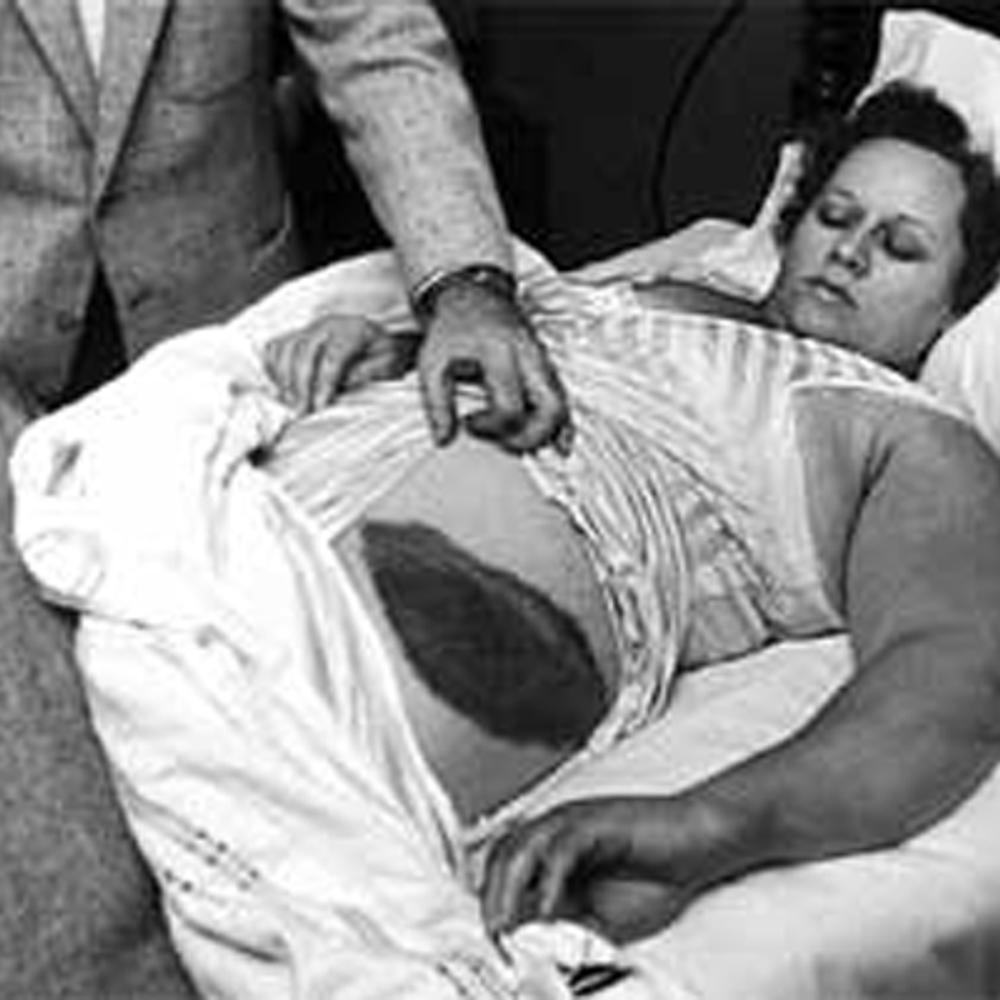On the afternoon of November 30, 1954, Ann Hodges laid down on her couch in Sylacauga to take a nap. She woke up that afternoon to a loud noise and a sharp pain in her upper thigh.
While Hodges was sleeping, an 8.5-pound space rock fell through her roof, bounced off a radio and collided into her thigh and hand. That made Hodges the first person known to be struck by a meteorite.
After the impact, Hodges and her mother, who was also at the house when the meteorite came crashing through the ceiling, thought that the chimney had collapsed due to the large amount of dust and debris.
But when they noticed the rock on the floor, the two immediately called the police.
Hodges’s husband, Eugene, returned from work later that evening only then to be informed about what happened to his wife.
Hodges did not go to the hospital until the next day after a restless night of sleep due to distress. Her only injury was a large bruise below her hip. She survived the impact but died 18 years later due to kidney failure.

Airmen from Maxwell Air Force Base in Montgomery came to Hodges’s home to confiscate the meteorite and identified the rock as a chondrite, a non-metallic meteorite formed when dust and small grains accumulated in the early Solar System nearly 4.5 billion years ago.
In the days following the incident, nearly 200 reporters gathered outside Hodges’s house.
The mayor of Sylacauga at the time initially planned on giving the meteorite fragment to the University of Alabama to be displayed in the Alabama Museum of Natural History but eventually gave it back to Hodges, who then engaged in an uphill legal battle with her landlady over its possession.
However, another fragment of the original meteorite, which had split while soaring over Sylacauga, was loaned to the American Museum of Natural History. It was joined in 2005 by the radio that was hit by the meteorite in Hodges’s home.
Though Hodges remains the only person ever in recorded history to be hit by a meteorite, thousands of meteorites hit the Earth annually, according to Space.com. However, most of these pieces of space rock are tiny and go unnoticed.
Most meteorites that are found on the ground weigh less than a pound. Despite its small size, a meteorite weighing just that much can plow through a standard roof and shatter a car windshield.
According to the Smithsonian Magazine, a meteorite struck a parked car in New York in 1992. Another meteorite, weighing a whopping 40 pounds, crashed through the roof of a home in New Orleans in 2003, though no one was hurt. In 2007, a meteorite strike in Peru made people sick by releasing fumes into the water supply, and in 2013, a meteor exploded almost 100,000 feet above the Ursal region in Russia, resulting in a shock wave that injured 1,200 people and caused $33 million in damage.
To connect with the author of this story, or to comment, email will.blakely@1819news.com or find him on Twitter and Facebook.
Don’t miss out! Subscribe to our newsletter and get our top stories every weekday morning.










